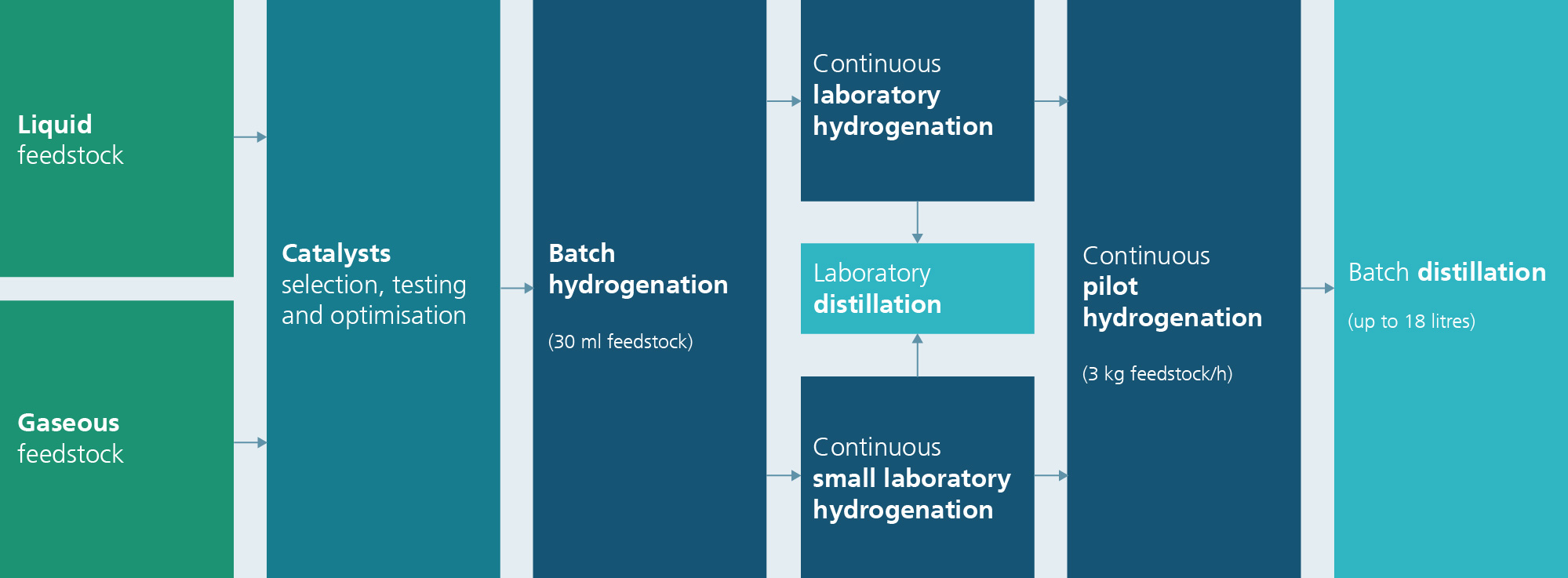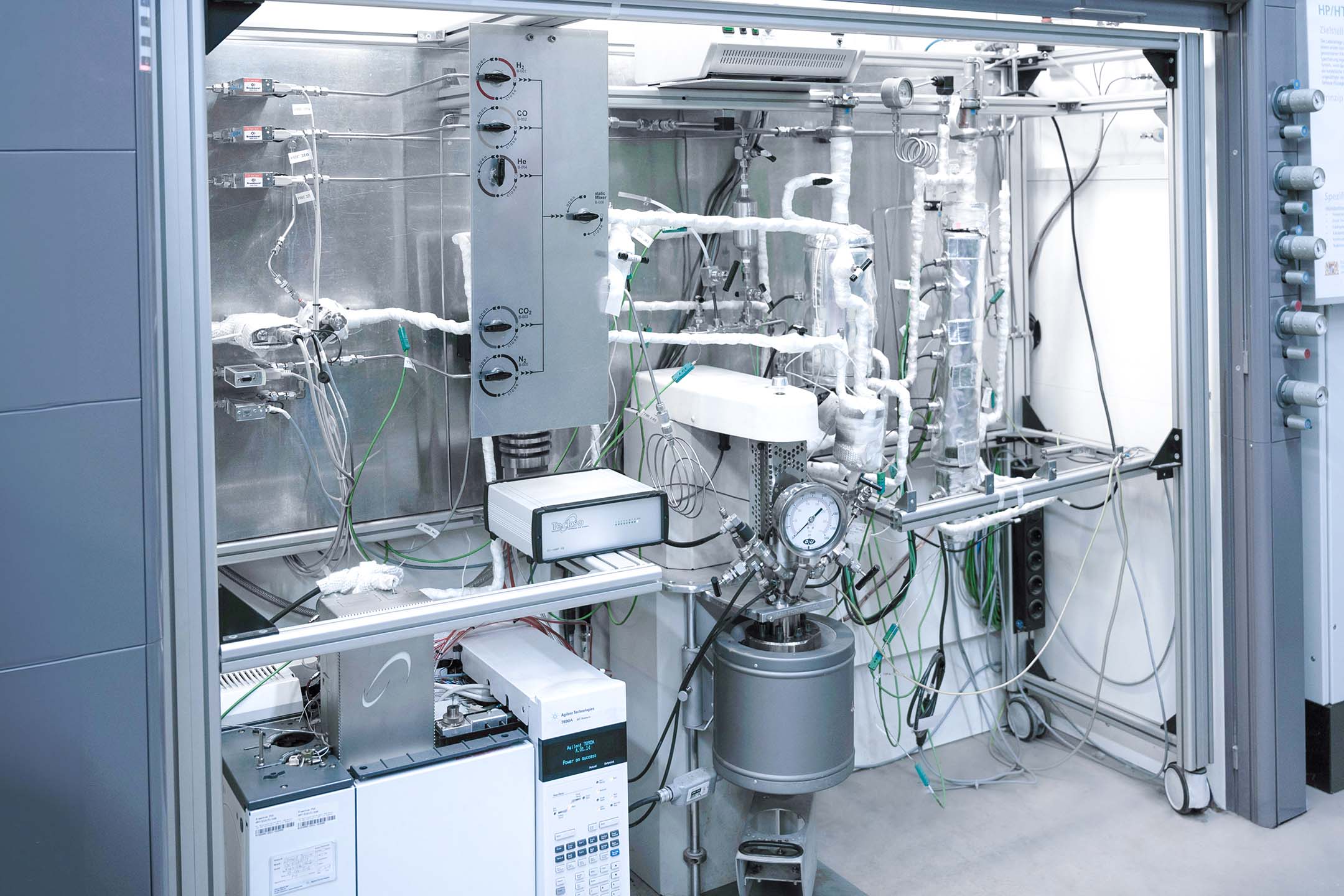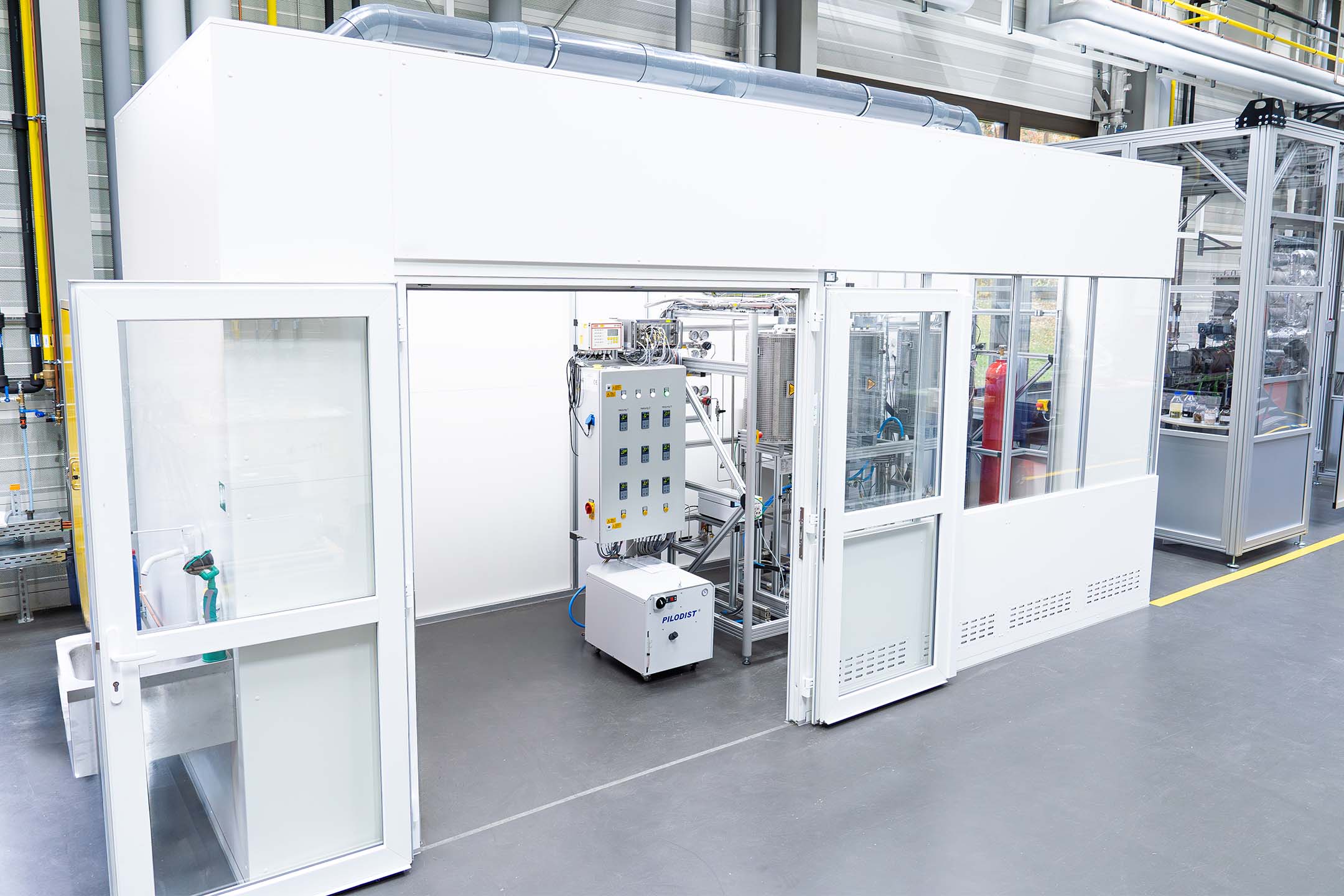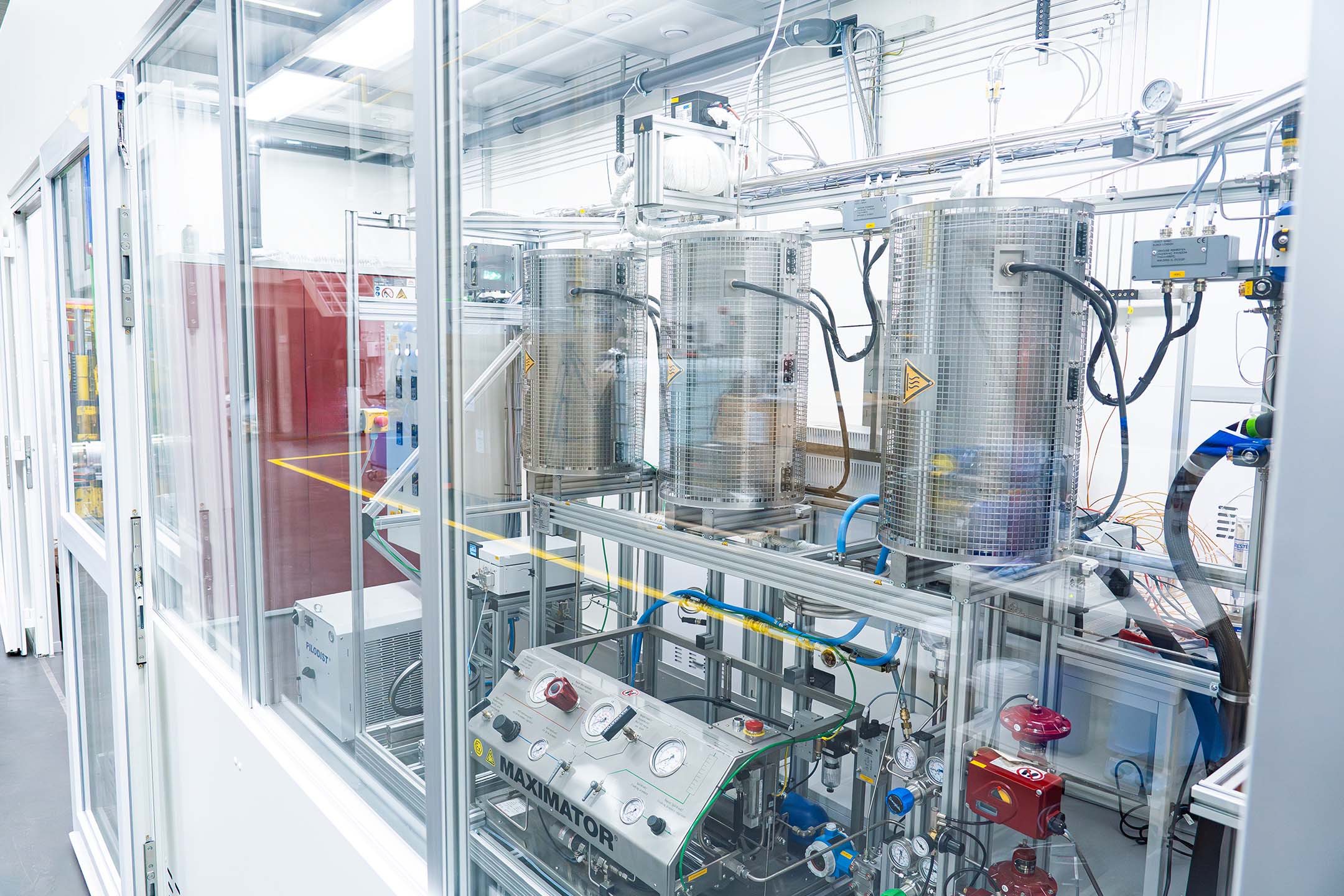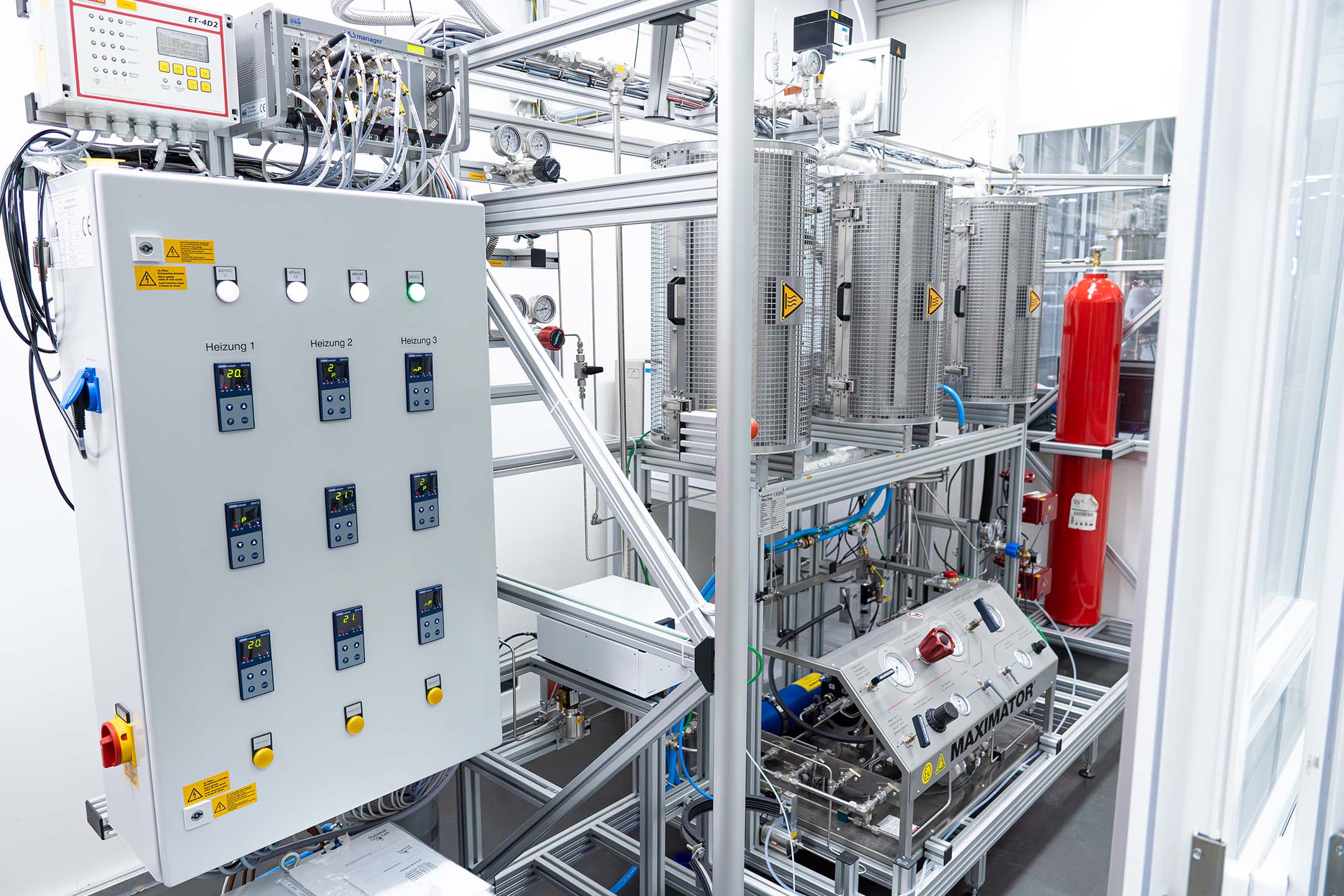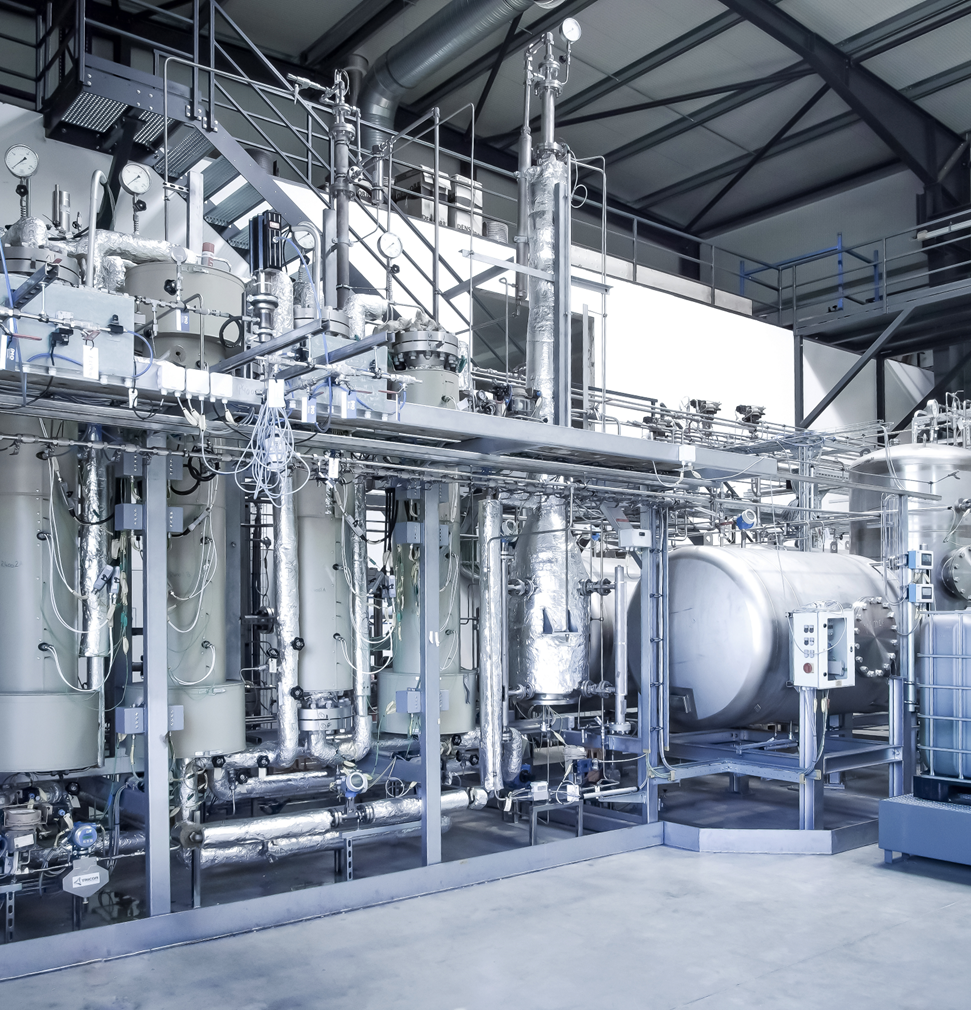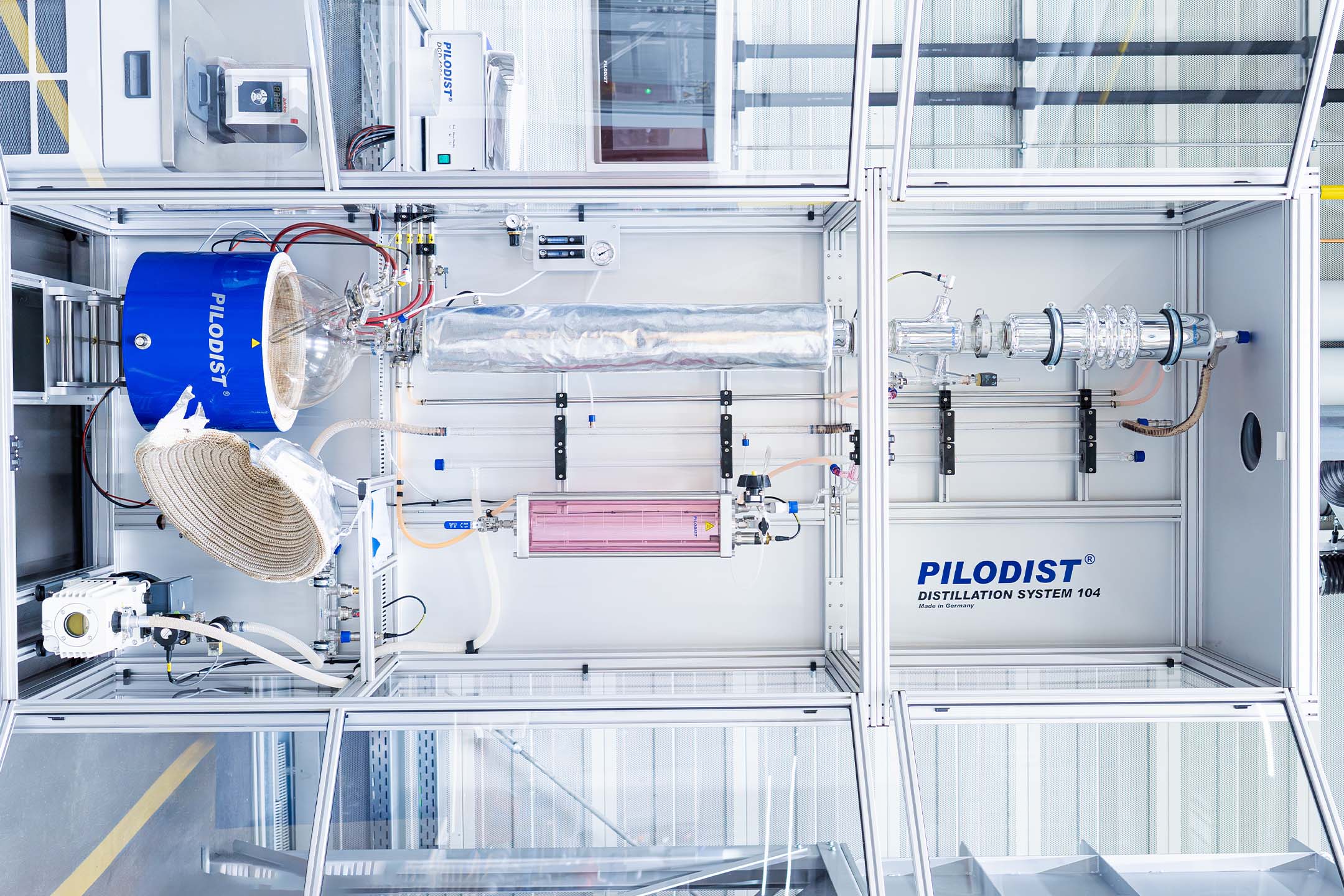Upgrading of oils and gases from regenerative feedstocks
Fraunhofer UMSICHT Sulzbach-Rosenberg has been involved in the research of (bio)refinery processes for years. The goal is the production of sustainable liquid energy sources (e.g. latest generation biofuels) for mobility and storage, as well as the production of defossilized chemicals and basic materials for the chemical industry.
Research and development activities focus on the development and optimization of downstream process routes for petroleum substitutes, e.g. pyrolysis oils, synthesis gases, halogenated hydrocarbons or Fischer-Tropsch products. One focus is on the removal of heteroatoms.
Range of services: downstream processes
Our range of services includes:
- Testing and optimization of catalysts on a pilot plant scale
- Catalytic conversion of reactants into specific products - from laboratory to pilot plant scale
- Distillative separation of intermediates
- Design of efficient process routes, including reaction control, reactor design and process simulation
- Continuous hydrotreatment (up to 3 liters of oil / liquid feedstock per hour) in pilot-scale reactor
Thanks to test rigs and experimental reactors in different sizes, we can offer the right setup for each project, e.g. prescreening trials in a batch reactor, followed by continuous hydrogenation (hydrotreatment) at larger scale and subsequent scale-up to pilot scale.

